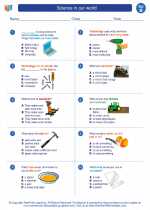Frontal Rain
Frontal rain occurs when two air masses with different temperatures and humidity levels meet. When a warm air mass and a cold air mass meet, the warm air is forced to rise over the denser cold air. As the warm air rises, it cools and the water vapor it contains condenses into clouds, eventually leading to precipitation in the form of rain.
How Frontal Rain Forms
Frontal rain typically occurs at the boundary between two air masses, known as a front. There are two main types of fronts that can lead to frontal rain:
- Cold Front: When a cold air mass advances and pushes under a warm air mass, the warm air is forced to rise rapidly. As it rises, it cools and forms clouds, leading to heavy rain showers.
- Warm Front: When a warm air mass advances and rises over a cold air mass, the warm air gradually cools as it ascends, leading to the formation of clouds and precipitation over a larger area, often resulting in more prolonged periods of light to moderate rain.
Study Guide for Frontal Rain
Here are some key points to remember when studying frontal rain:
- Understand the concept of air masses and how they interact at fronts to create frontal rain.
- Learn the differences between cold fronts and warm fronts, including the weather patterns associated with each type of front.
- Study the process of condensation and precipitation, and how it relates to the formation of frontal rain.
- Explore real-life examples of frontal rain events and their impacts on weather and climate.
- Review diagrams or animations of frontal rain formation to visualize the process more clearly.
With this study guide, you'll be well-prepared to understand the concept of frontal rain and its role in shaping weather patterns.
[Frontal Rain] Related Worksheets and Study Guides:
.◂Science Worksheets and Study Guides Second Grade. Science in our world
Study Guide Science in our world
Science in our world  Worksheet/Answer key
Worksheet/Answer key Science in our world
Science in our world  Worksheet/Answer key
Worksheet/Answer key Science in our world
Science in our world  Worksheet/Answer key
Worksheet/Answer key Science in our world
Science in our world  Vocabulary/Answer key
Vocabulary/Answer key Science in our world
Science in our world 

 Worksheet/Answer key
Worksheet/Answer key
 Worksheet/Answer key
Worksheet/Answer key
 Worksheet/Answer key
Worksheet/Answer key
 Vocabulary/Answer key
Vocabulary/Answer key

The resources above cover the following skills:
LIFE SCIENCE (NGSS)
Biological Evolution: Unity and Diversity
Students who demonstrate understanding can:
Make observations of plants and animals to compare the diversity of life in different habitats[Clarification Statement: Emphasis is on the diversity of living things in each of a variety of different habitats.] [Assessment Boundary: Assessment does not include specific animal and plant names in specific habitats.]